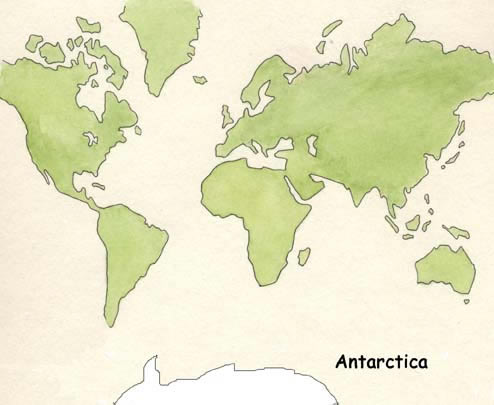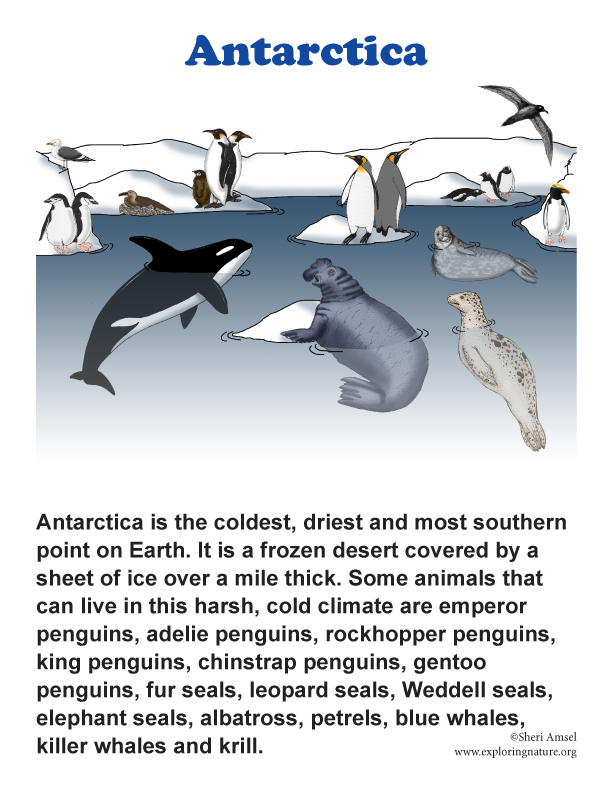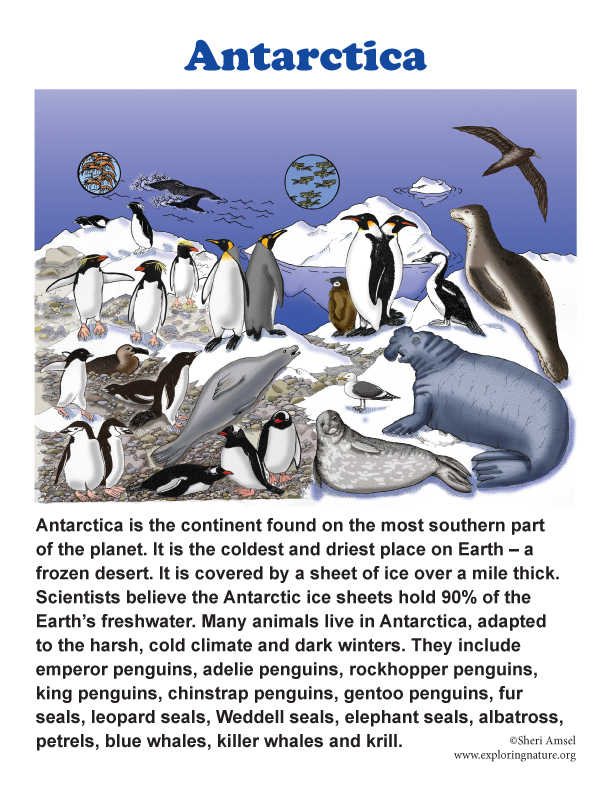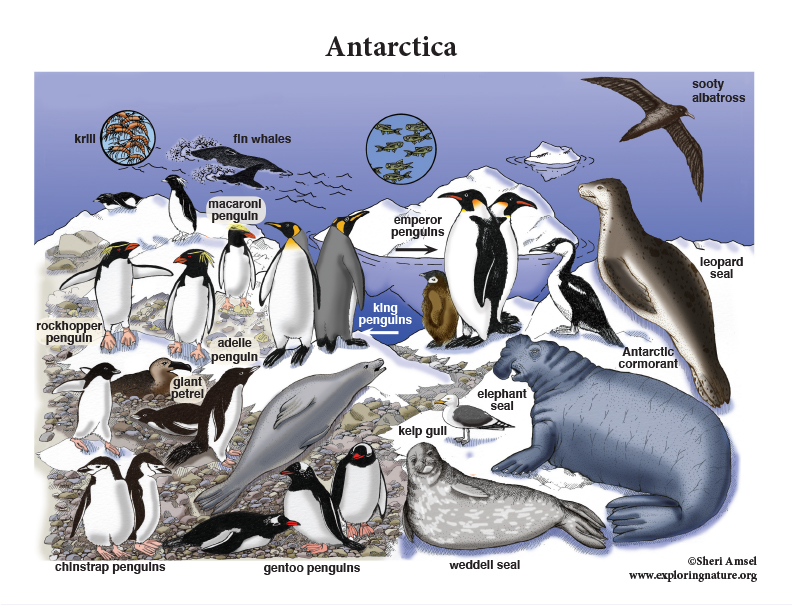

Antarctica is the continent found on the most southern part of the earth. It includes the South Pole and is surrounded by the Southern Ocean.
It is the coldest place on earth with temperatures dipping down to 130 degrees below zero F. The wind along the coast can blow fiercely. It is also considered the driest place on earth even though most of it is covered by a sheet of ice a mile and a half thick. There is very little snowfall and most of that is on the coastline where it can fall very heavily, very quickly. The interior of the continent is really a frozen desert. This is a strange fact considering scientists believe the Antarctic ice sheets hold about 90% of the earth's fresh water. There are even lakes that have been discovered deep under the ice. It has a mountain range called the Transantarctic Mountains that divide the continent into Eastern and Western Antarctica. The tallest mountain in Antarctica is over 16,000 feet tall. There are even a few active volcanoes. Though many people visit Antarctica as tourists and researchers, no humans are native to the continent.
Many animals live in Antarctica including emperor penguins, adelie penguins, rockhopper penguins, king penguins, chinstrap penguins, gentoo penguins, fur seals, leopard seals, Weddell seals, elephant seals, albatross, petrels, blue whales, killer whales and krill.
There are few plants on Antarctica. Only mosses and liverworts can survive the severe cold and dry conditions. There are also some lichens, fungi and algae on the continent.
Related Activity:
Coloring Page
Antarctic Word Search (Primary Students)
Antarctic Word Search (Middle School)
Antarctic Word Search (Adults)
Antarctica Hidden Picture
Related Testing and Assessment:
Labeling Page
Antartica Read and React Quiz
Related Visual Aid:
Antarctica Poster
When you research information you must cite the reference. Citing for websites is different from citing from books, magazines and periodicals. The style of citing shown here is from the MLA Style Citations (Modern Language Association).
When citing a WEBSITE the general format is as follows.
Author Last Name, First Name(s). "Title: Subtitle of Part of Web Page, if appropriate." Title: Subtitle: Section of Page if appropriate. Sponsoring/Publishing Agency, If Given. Additional significant descriptive information. Date of Electronic Publication or other Date, such as Last Updated. Day Month Year of access < URL >.
Amsel, Sheri. "Antarctica" Exploring Nature Educational Resource ©2005-2024. December 13, 2024
< http://www.exploringnature.org/db/view/Antarctica >




